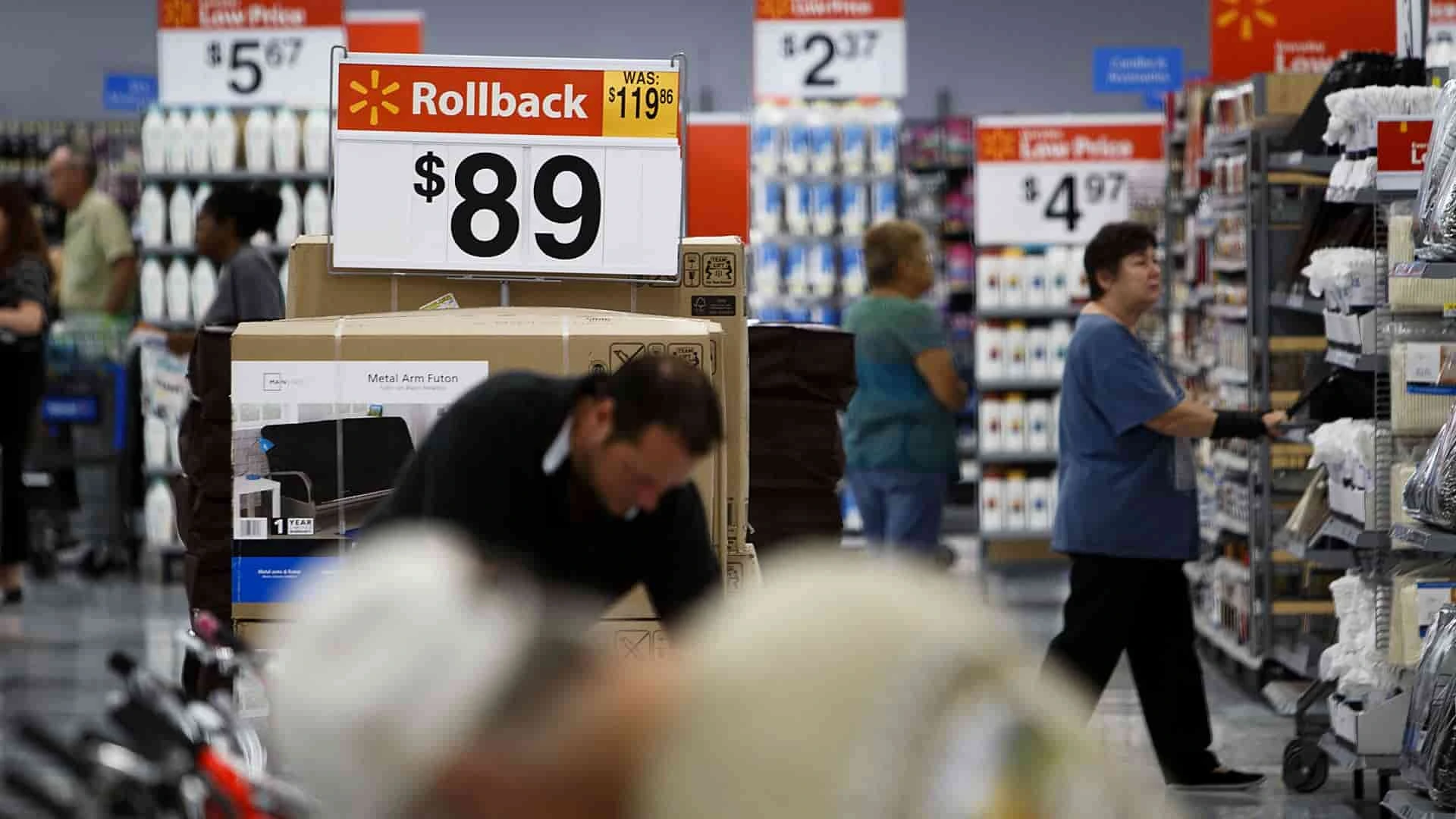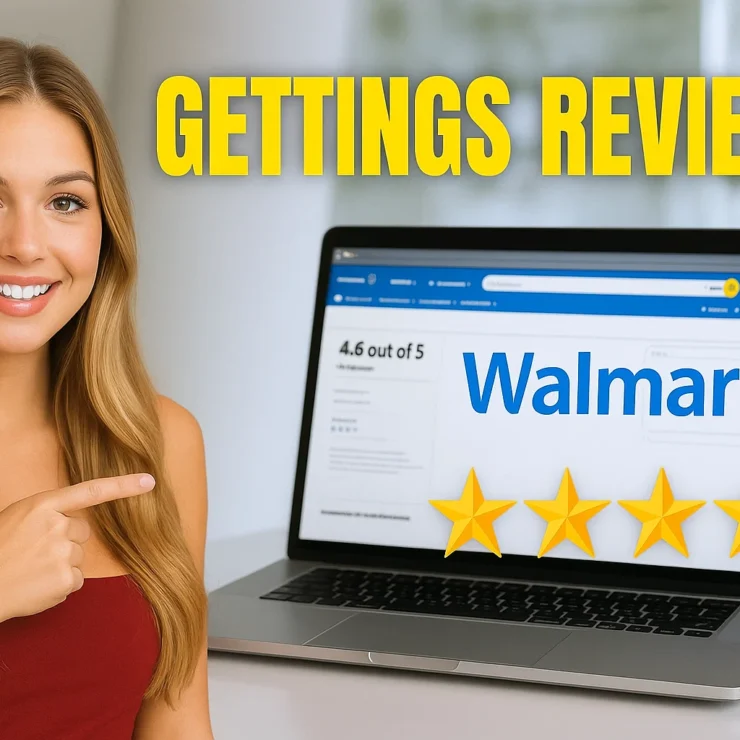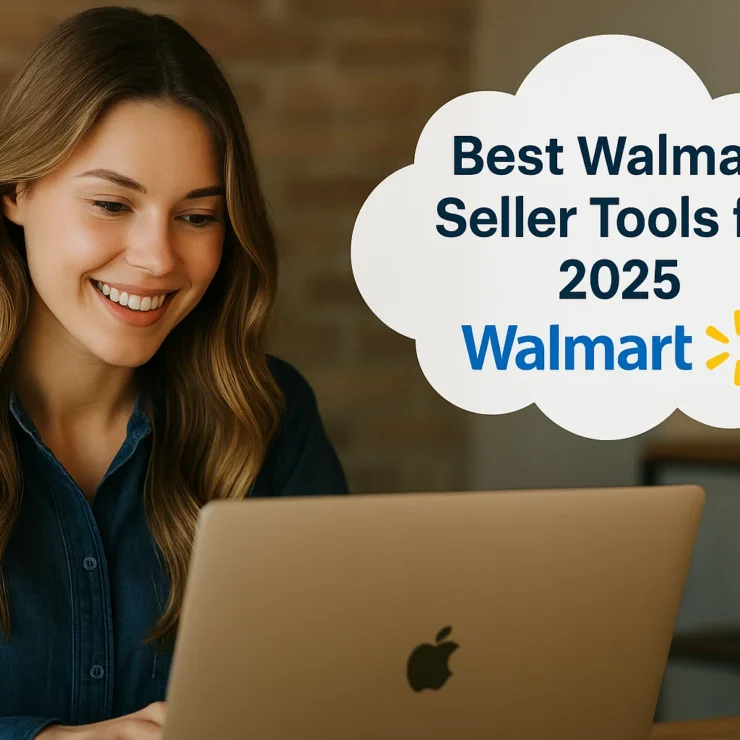If you’ve ever visited Walmart’s stores or scrolled through its online marketplace, chances are you’ve seen the famous “Walmart Rollback” tag. Often displayed in bright red with bold text, this pricing tactic is a cornerstone of Walmart’s marketing strategy—and a powerful tool for both the retail giant and third-party sellers on the platform.
But what does Rollback really mean at Walmart? How is it different from clearance or special buys? And more importantly, what does it mean for you as a Walmart Marketplace seller?
In this comprehensive guide, we’ll break down everything you need to know about Walmart’s Rollback strategy—from its purpose and mechanics to how it impacts your products and sales performance. Whether you’re new to selling on Walmart or looking to optimize your marketplace strategy, understanding how Rollbacks work can give you a competitive edge in 2025 and beyond.
What Does Rollback Mean at Walmart?
Rollback at Walmart refers to a temporary price reduction on specific items, offered for a set period of time to stimulate sales and offer better value to customers. Unlike clearance items, which are often discounted to clear out discontinued or seasonal stock, Rollback items are still part of Walmart’s regular inventory—just offered at a lower price for a limited time.
The term “Rollback” has become synonymous with Walmart’s brand identity. It signals to shoppers that they’re getting a deal—not on leftover items, but on everyday essentials and high-demand products. You’ll find Rollbacks on everything from groceries and electronics to home goods and clothing, both in-store and online.
For example, if a product typically sells for $49.99, a Walmart Rollback might temporarily reduce the price to $39.99. This creates urgency and drives conversions, as customers see it as an opportunity to save.
In summary, a Rollback at Walmart means:
A temporary discount (not permanent)
On active, in-demand inventory
Aimed at increasing sales volume
Not the same as clearance pricing
Understanding what a Rollback is—and isn’t—is key for sellers who want to align their products with Walmart’s promotional strategy and take advantage of increased visibility and traffic during Rollback events.
If you’re just starting out with Walmart, check out our detailed guide to learn how to sell products on Walmart.
Why Does Walmart Use Rollbacks?
Walmart uses Rollbacks as a strategic pricing tool to achieve multiple business objectives that go beyond just offering customers a discount. These temporary price reductions serve several purposes that align with Walmart’s core philosophy: “Everyday Low Prices.” Let’s explore why Rollbacks are a crucial part of Walmart’s pricing and marketing strategy.
Boost Sales Volume
One of the primary reasons Walmart uses Rollbacks is to increase product turnover. Lower prices entice more buyers, driving up the volume of sales. This is particularly effective for fast-moving consumer goods, electronics, and seasonal items.
Stay Competitive
Walmart competes with giants like Amazon, Target, and Costco. Rollbacks help Walmart stay price-competitive, encouraging shoppers to choose Walmart over other retailers. It also sends a clear message that Walmart is serious about offering value.
Enhance Customer Loyalty
Regular Rollbacks keep customers coming back. The perception of getting a deal creates repeat visits, especially when shoppers know that Rollback offers are updated frequently. It builds brand loyalty and helps reinforce Walmart’s reputation for affordability.
Promote Specific Brands or Products
Suppliers often collaborate with Walmart to place their products on Rollback. This cooperative marketing effort increases visibility for the brand and helps Walmart feature products that are strategically important, whether it’s to move inventory or boost category performance.
Support Inventory Management
Rollbacks can be used to move surplus or stagnant inventory without the branding stigma of clearance. This helps maintain stock freshness, manage warehouse space, and keep inventory lean without deep discounting.
Drive In-Store and Online Traffic
Strategic Rollbacks—especially on popular or high-ticket items—can drive significant traffic to both Walmart stores and Walmart.com. This halo effect increases the chances of cross-selling and upselling.
A Seller’s Guide to Walmart’s Private Label Trends in 2025
Walmart Rollback vs. Clearance vs. Special Buy
Walmart uses multiple pricing strategies to attract customers and manage its massive inventory effectively. While many shoppers assume “Rollback,” “Clearance,” and “Special Buy” are interchangeable, each term has distinct meaning and purpose in Walmart’s merchandising ecosystem. Understanding these differences is essential—especially for Walmart Marketplace sellers—as each strategy can influence customer perception, sales volume, and product visibility in unique ways.
Rollback
Definition: A Rollback is a temporary price reduction on a product that is expected to return to its original price after a set period. Rollbacks are often promoted heavily both in-store and online and are used to create urgency and excitement around a product.
Key Features:
Prices are reduced for a limited time (usually weeks, not days).
Often negotiated in collaboration with suppliers or brands.
Displayed with distinct Rollback signs in stores and badges online.
Not necessarily tied to product discontinuation or overstock.
Purpose:
Stimulate short-term demand.
Compete with prices on other platforms (e.g., Amazon).
Support sales of featured or seasonal products.
Clearance
Definition: Clearance refers to deeply discounted items that are being phased out or discontinued. The primary goal of clearance is to quickly move out old or excess inventory and make room for new stock.
Key Features:
Significant price drops, sometimes 50% or more.
Often unplanned and tied to inventory needs.
May be the final markdown before items are removed entirely.
Products on clearance may not be restocked.
Purpose:
Clear out slow-moving or out-of-season merchandise.
Reduce carrying costs and warehouse clutter.
Make way for updated product versions or lines.
Special Buy
Definition: A Special Buy is a limited-time offer on a specific product or product bundle that is offered at a reduced price. These deals often apply to exclusive inventory, either from a special purchase Walmart made from a supplier or items produced specifically for Walmart.
Key Features:
One-time availability—once it’s gone, it’s gone.
May involve limited-edition products or large bulk orders.
Often not repeated or restocked.
Highlighted as unique or exclusive deals.
Purpose:
Drive impulse purchases through exclusivity.
Attract deal-seekers and bargain hunters.
Showcase supplier partnerships.
Quick Comparison Table
| Feature | Rollback | Clearance | Special Buy |
|---|---|---|---|
| Duration | Temporary | Until stock runs out | Limited-time / one-off |
| Intent | Increase short-term sales | Liquidate excess/discontinued | Promote exclusive deals |
| Restocking Likely? | Yes | No | Rare |
| Discount Level | Moderate | Deep | Moderate to deep |
| Visibility | High (promoted) | Medium (in-store often) | Varies (sometimes online-only) |
| Product Status | Ongoing or in-season | Discontinued/Outdated | Special inventory |
Why Does This Matter for Sellers?
For Walmart Marketplace sellers, understanding these distinctions can help you:
Position your products better for price-sensitive customers.
Choose the right promotional tools in Seller Center.
Avoid over-discounting items when Rollback would suffice.
Leverage Walmart’s Rollback promotions instead of relying on deep clearance cuts.
Does Walmart Rollback Online Items?
Yes, Walmart does extend its Rollback pricing strategy to online items, and in many cases, online rollbacks offer even greater opportunities for both customers and sellers.
In today’s eCommerce-driven world, Walmart recognizes the importance of consistent pricing strategies across channels. This includes aligning rollback promotions in both physical stores and Walmart.com to ensure a seamless customer experience and maximize market reach.
Discover which products perform best on Walmart Marketplace by checking out our guide on Walmart Best Selling Items: Top Products to Sell! Boost your sales with trending, high-demand items.
Can Any Item Be Placed on Rollback?
Not every item on Walmart’s shelves or in its digital catalog qualifies for a rollback. The process is strategic and data-driven, with a variety of factors determining whether a product is suitable for a rollback promotion. Both Walmart-owned inventory and Marketplace items go through evaluation before being approved.
Here’s what determines rollback eligibility:
Walmart-Owned Inventory vs. Marketplace Items
Walmart-Owned Inventory (1P): Walmart has complete control over these products and can initiate rollbacks based on internal metrics like sales velocity, inventory levels, and seasonal trends.
Marketplace (3P) Sellers: While Marketplace sellers can offer discounts, their listings won’t automatically qualify as official Walmart rollbacks. Sellers must work through promotional programs or special pricing strategies aligned with Walmart’s rollback framework.
Note: Rollbacks are not the same as regular price cuts made by sellers—only Walmart can label a product as a “Rollback” on its site.
Sales Performance & Inventory Status
Walmart uses historical sales data and inventory turnover rates to decide whether a rollback will help accelerate movement. Products that are:
Underperforming but have potential, or
Overstocked and need clearing
…are more likely to be selected.
Seasonal and Promotional Alignment
Products that tie into major retail events—like Back-to-School, Black Friday, or Holiday Sales—are often prioritized. Rollbacks act as spotlight deals during these times, driving higher footfall and online traffic.
Supplier Agreements & Margin Flexibility
For Walmart-owned products, the rollback may only happen if suppliers agree to cost concessions. The ability to reduce the price without affecting Walmart’s margins is a key consideration.
For Marketplace sellers, offering a discount may improve your Buy Box eligibility or position during sales periods, even if not labeled an official rollback.
Category & Customer Demand
Certain categories—such as groceries, electronics, home goods, and toys—are more frequently featured in rollback promotions due to higher demand elasticity.
If your product falls in one of these high-traffic categories and meets Walmart’s quality and fulfillment standards, it’s more likely to qualify.
How Long Does Walmart Rollback Last?
Walmart rollbacks typically last anywhere from a few weeks to 90 days, depending on the product, sales performance, and promotional calendar. Unlike clearance deals, rollbacks are temporary discounts designed to create urgency without signaling product discontinuation.
The exact duration can vary based on:
Sales Targets: If a product reaches its sales goal early, the rollback may end sooner.
Seasonal Campaigns: Rollbacks tied to holidays or events (e.g., Back-to-School or Black Friday) may align with that period only.
Inventory Status: Overstocked items may remain on rollback longer until inventory normalizes.
For Marketplace sellers, while you can offer promotional pricing for any duration you choose, only Walmart-controlled rollbacks display the official “Rollback” badge.
To stay competitive, monitor your pricing strategy and track rollback cycles through your Seller Center analytics dashboard.
Want to understand how Walmart rollbacks affect 1P vs 3P sellers? Discover which selling model aligns best with your goals in our in-depth Walmart 1P vs 3P guide.
Challenges Sellers Might Face During Walmart Rollback
Being part of Walmart’s rollback ecosystem can offer third-party sellers a meaningful boost—but it doesn’t come without tradeoffs. Two major challenges sellers often face when rollbacks hit the platform are pricing pressure and shifting customer expectations.
Pricing
Rollbacks initiated by Walmart or big-name brands tend to set a new baseline for what customers expect to pay. If you’re selling similar products without the rollback discount, your listings might suddenly seem overpriced—even if your costs haven’t changed. This pushes sellers into a tricky spot: do you match the lower price to stay competitive and risk thinner margins, or hold your ground and risk fewer sales?
Visibility
Rollback items often get featured on homepage sliders, special deal sections, and search filters. That means more eyes—and clicks—on those listings. If you’re not on rollback, your product could get buried under the promotional traffic, even if it’s a better long-term value. For smaller sellers, this can feel like fighting uphill.
Buyer Psychology
Buyer Psychology plays a huge role. Rollbacks create urgency, which translates to quicker buying decisions. When customers see a non-discounted item next to a rollback offer, they’re more likely to skip over the regular listing—even if yours has better reviews or faster shipping.
For Marketplace sellers, this means keeping an eye not just on your own pricing strategy, but on what’s happening with Walmart’s promotional calendar overall. Because even if you’re not running a rollback, it still affects your lane on the road.
Pair rollback pricing with smart advertising! Learn how to boost visibility and conversions using Walmart Sponsored Products in our complete 2025 guide.
The Future of Walmart Rollbacks
At the 2024 Walmart Forum hosted by Cleveland Research Company (CRC), new insights emerged that reshape how both sellers and suppliers should think about Walmart rollbacks moving forward. The discussion revealed that rollbacks aren’t just surviving—they’re becoming even more central to Walmart’s value proposition and long-term pricing philosophy.
Rollbacks as a Core Pricing Pillar
According to CRC’s analysis, Walmart is doubling down on its rollback strategy in 2025, especially across its private label product lines. What was once a shared decision between Walmart and its supplier network is increasingly becoming a unilateral move initiated by Walmart itself. The message is clear: Rollbacks are no longer just a collaborative promotional tool—they’re a strategic lever directly controlled by the retailer to maintain its dominance in unit sales and customer loyalty.
Walmart’s emphasis on rollbacks shows that it’s not just fighting on price—it’s shaping consumer expectations. With inflationary pressure still affecting consumer wallets, Walmart views temporary price cuts as an effective way to reassure customers they’re still getting everyday value.
Shift from Supplier-Driven to Walmart-Controlled Rollbacks
Traditionally, rollback campaigns were co-funded and co-managed with suppliers. But CRC’s findings highlight a notable power shift: Walmart is now making more rollback decisions independently. This means suppliers are being asked to respond to Walmart’s pricing directives, often with less flexibility and fewer opportunities for negotiation.
As a result, brands may find themselves adjusting to reduced influence in how and when their products go on rollback. For new product launches, the expectation to offer immediate price incentives—without prior co-investment agreements—is growing. Suppliers must be prepared to react quickly to Walmart’s pricing expectations, especially when no cost-sharing arrangement is in place.
Key Pricing Thresholds Under the Microscope
Another major takeaway from CRC’s forum was Walmart’s renewed focus on psychological price points—those thresholds where small differences in pricing can significantly impact customer perception. For instance, pricing a product at $9.98 instead of $10.49 could make all the difference in sales velocity. Walmart is closely analyzing these thresholds and may call on suppliers to help achieve them, even if that means absorbing rising input costs.
Rather than accepting supplier-led price hikes, Walmart is increasingly asking for creative cost containment strategies. In 2025, any upward price adjustment will likely require a solid business case, with data to back up why the increase is unavoidable. For suppliers, the pressure is mounting to find efficiencies internally rather than passing costs directly onto the customer.
Walmart Cash: A New Era of Value-Driven Promotions
One of the most innovative trends CRC spotlighted is Walmart’s use of Walmart Cash—a digital incentive program that delivers value to customers without traditional price reductions. Instead of asking suppliers to slash prices, Walmart can offer shoppers a cashback-style credit on eligible purchases.
This approach benefits all parties:
Shoppers feel they’re getting a deal.
Walmart maintains its value perception and customer retention.
Suppliers can preserve margins while participating in promotional campaigns.
Expect to see more of these non-traditional pricing tactics in 2025. Walmart is expanding the toolbox it uses to deliver value, and suppliers who adapt to this evolving model—by supporting cashback incentives, bundling strategies, or category-wide promotions—will be in a stronger position to thrive.
How Can Suppliers Prepare for Walmart Rollbacks?
Participating in Walmart’s rollback program offers a unique opportunity for suppliers to increase visibility, move volume, and build long-term relationships with buyers. To capitalize on this chance, suppliers need to approach rollbacks strategically. Here’s how to prepare effectively:
Align Early with Walmart Merchandisers
Early and transparent communication with your Walmart buyer is essential. Collaborate on identifying the best timing and product selections for rollback campaigns. Sharing data on historical performance, seasonality, and inventory levels will help both parties make smarter pricing and promotional decisions.
Choose High-Impact Products
Focus on products that already show strong sales velocity or have high growth potential. Rollbacks work best when they amplify interest, not create it from scratch. Consider including:
Bestsellers to accelerate momentum.
Overstocks you need to move quickly.
Seasonal products at peak demand times.
Price Smartly, Not Just Lower
Work closely with your finance team to determine how much margin you can give up without hurting profitability. Offer meaningful discounts that still allow for a positive ROI. Keep in mind Walmart’s pricing reputation—shoppers expect genuine savings.
Optimize Product Presentation
A rollback price isn’t enough—you also need standout listings. Ensure your packaging, product titles, and online images clearly reflect the rollback value. Emphasize features, benefits, and use cases. Eye-catching visuals and concise, benefit-driven copy can drive higher conversions.
Ensure Supply Chain Readiness
Rollback campaigns can spike demand rapidly. Make sure your logistics are in place:
Coordinate with your manufacturing team to scale production.
Set up buffer inventory at distribution centers.
Monitor fulfillment metrics closely to avoid delays or cancellations.
Track, Learn, and Improve
During and after the rollback, review KPIs like sell-through rate, customer feedback, and inventory turnover. Use this insight to adjust future rollback participation strategies, identify high-performing SKUs, and refine promotional timing.
By combining product strategy, operational readiness, and data-driven refinement, suppliers can turn rollbacks into powerful sales and branding opportunities—without sacrificing profit or control.
Conclusion: What Does RollBack Mean at Walmart
Walmart rollbacks are more than just temporary discounts — they’re a powerful strategy that benefits both the retailer and its marketplace sellers. By understanding what a rollback truly means and how it differs from clearance or other promotions, sellers can better align their strategies with Walmart’s pricing model. From choosing the right products to ensuring supply chain readiness and monitoring performance, every step can help you maximize visibility, boost conversions, and drive sustained growth.
As Walmart continues to invest in competitive pricing and value-driven shopping experiences, marketplace sellers who understand and prepare for rollbacks stand to gain significantly. Whether you’re a new seller or an established partner, integrating rollback strategies into your sales planning can lead to greater customer engagement and long-term profitability.
FAQ's: What Does RollBack Mean at Walmart
What is a rollback at Walmart?
A rollback at Walmart refers to a temporary price reduction on a product, initiated by the retailer in partnership with suppliers. Unlike clearance sales, rollbacks are often used to promote popular or high-demand items and are part of Walmart’s everyday low price (EDLP) strategy.
How long do Walmart rollbacks typically last?
Rollback durations vary but typically last few weeks. The timeframe may depend on inventory levels, supplier agreements, and the performance of the promotion. Walmart may extend or shorten the rollback based on demand or strategic goals.
How can I make the most of Walmart rollbacks?
To succeed with rollbacks:
Choose popular or high-potential products.
Set competitive prices that preserve profit margins.
Ensure your inventory is ready for increased demand.
Optimize listings with engaging content and visuals.
Monitor results to adjust future strategies.
How is a rollback different from clearance?
A rollback is a temporary promotional discount on a regular product, often used to boost sales volume or market visibility. Clearance, on the other hand, is a permanent markdown on products being phased out or discontinued, aimed at clearing shelf space for new inventory.
Contact Us for Tailored Solutions – Stores Automation:
Ready to transform your Walmart store and achieve big wins? Contact us at Stores Automation for personalized solutions that leverage the power of automation for your business. Reach out to us at 302-204-8244 or via email at info@storesautomation.com. Sign up and Embark on the path to e-commerce success with Stores Automation – where small changes lead to big wins!





